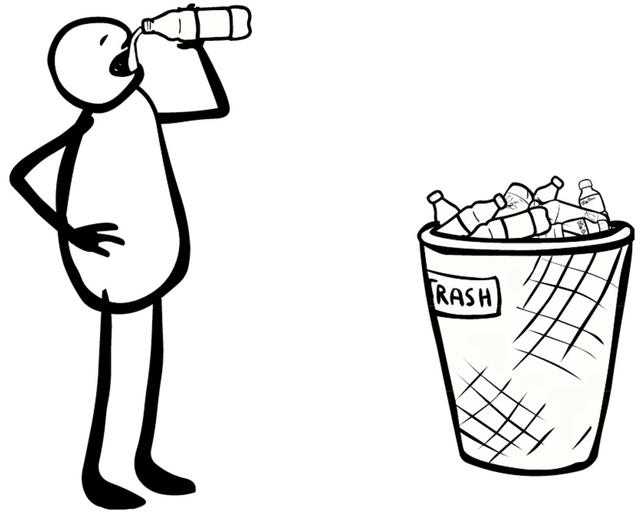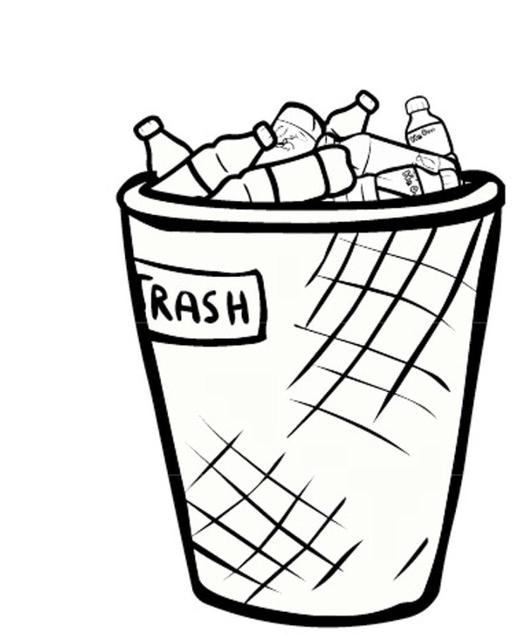The Plastic Catastrophe in the Ocean Is Even Worse Than We Thought
New research shows that the plastic problem is growing,
but the full impact on marine life remains unknown.
By Taylor Hill / TakePart
December 17, 2015
Somewhere between 15 trillion and 51 trillions pieces of plastic litters the world’s oceans, a new study has found. That’s three to 10 times more plastic than scientists had previously estimated.
The study, led by climate scientist Erik van Sebille at London’s Imperial College and coauthored by researchers at nonprofit group 5 Gyres, built on the findings of two papers published last year. The scientists tapped every data set on plastic pollution published since the 1970s and ran the numbers through three computer models
The total weight of small plastic pieces that accumulated in 2014 alone is estimated to be between 93,000 and 236,000 metric tons, “which is only approximately one percent of global plastic waste estimated to enter the ocean” annually, the researchers wrote. The study only focused on microplastics (those less than 200 millimeters in size) that could be captured by trawling nets pulled along the ocean surface. Thus the researchers’ estimates do not count plastic waste that ends up sinking to the ocean floor or is ingested by fish and other marine species.
Each American throws away as much as 185 pounds of plastic a year. In the last decade, the total weight of plastic products entering the market has risen from 225 million tons in 2004 to 311 million tons in 2014, according to industry group association Plastics Europe.
“These estimates are larger than previous global estimates, but vary widely because the scarcity of data in most of the world ocean,” the researchers wrote. Studies estimate that large amounts of plastic go undetected because they sink to the ocean floor or are eaten by fish.
In one study, deep-sea fish in the North Pacific gyre were estimated to have ingested between 12,000 and 24,000 metric tons of microplastics annually.
According to the new study, the wide range in the estimated amount of plastic entering the world’s oceans every year “reveals a fundamental gap in understanding.”
But the data available shows that the North Pacific Ocean, often referred to as the “Great Pacific Garbage Patch,” has the highest density of plastic thanks in part to the region’s circular ocean currents and wind patterns.
This article originally appeared on TakePart.com. Reprinted with permission
Chicago Greens
How long does it take for plastics to biodegrade?
by William Harris
Drop a ketchup bottle on the floor, and you'll be thankful for polyethylene terephthalate, or PET, the nearly indestructible plastic used to make most containers and bottles. Drop the same bottle into a landfill, however, and you might have second thoughts. Why? Because petroleum-based plastics like PET don't decompose the same way organic material does. Wood, grass and food scraps undergo a process known as biodegradation when they're buried, which is a fancy way of saying they're transformed by bacteria in the soil into other useful compounds. But bacteria turn up their noses at plastic. Load their dinner plates with some plastic bags and bottles, and the one-celled gluttons will skip the meal entirely. Based on this logic, it's safe to argue that plastic will never biodegrade. Of course, that's not the end of the story. It was recently demonstrated that certain types of bacteria can break down plastic.
Until waste treatment plants can implement any new processes, however, the only real way to break down plastic is through photodegradation. This kind of decomposition requires sunlight, not bacteria. When UV rays strike plastic, they break the bonds holding the long molecular chain together. Over time, this can turn a big piece of plastic into lots of little pieces.
Of course, plastic buried in a landfill rarely sees the light of day. But in the ocean, which is where a lot of discarded grocery bags, soft drink bottles and six-pack rings end up, plastic is bathed in as much light as water. In 2009, researchers from Nihon University in Chiba, Japan, found that plastic in warm ocean water can degrade in as little as a year. This doesn't sound so bad until you realize those small bits of plastic are toxic chemicals such as bisphenol A (BPA) and PS oligomer. These end up in the guts of animals or wash up on shorelines, where humans are most likely to come into direct contact with the toxins.
One solution to this environmental disaster is biodegradable plastic. There are two types currently on the market -- plant-based hydro-biodegradable plastic and petroleum-based oxo-biodegradable plastic. In the former category, polylactic acid (PLA), a plastic made from corn, tops the list as the most talked-about alternative. PLA decomposes into water and carbon dioxide in 47 to 90 days -- four times faster than a PET-based bag floating in the ocean. But conditions have to be just right to achieve these kinds of results. PLA breaks down most efficiently in commercial composting facilities at high temperatures. When buried in a landfill, a plastic bag made from corn may remain intact just as long as a plastic bag made from oil or natural gas.
"One million plastic bottles are bought around the world every minute, with most ending up in landfill or in the sea."
Investment in manufacturing plants by fossil fuel companies will increase plastic production by 40% risking permanent pollution of the earth
The Guardian, by Matthew Taylor
Tue 26 Dec ‘17
The global plastic binge which is already causing widespread damage to oceans, habitats and food chains, is set to increase dramatically over the next 10 years after multibillion dollar investments in a new generation of plastics plants in the US.
Fossil fuel companies are among those who have ploughed more than $180bn since 2010 into new “cracking” facilities that will produce the raw material for everyday plastics from packaging to bottles, trays and cartons.
The new facilities – being built by corporations like Exxon Mobile Chemical and Shell Chemical – will help fuel a 40% rise in plastic production in the next decade, according to experts, exacerbating the plastic pollution crisis that scientist warn already risks “near permanent pollution of the earth.”
“We could be locking in decades of expanded plastics production at precisely the time the world is realising we should use far less of it,” said Carroll Muffett, president of the US Center for International Environmental Law, which has analysed the plastic industry.
“Around 99% of the feedstock for plastics is fossil fuels, so we are looking at the same companies, like Exxon and Shell, that have helped create the climate crisis. There is a deep and pervasive relationship between oil and gas companies and plastics.”
Greenpeace UK’s senior oceans campaigner Louise Edge said any increase in the amount of plastic ending up in the oceans would have a disastrous impact.
“We are already producing more disposable plastic than we can deal with, more in the last decade than in the entire twentieth century, and millions of tonnes of it are ending up in our oceans.”
The huge investment in plastic production has been driven by the shale gas boom in the US. This has resulted in one of the raw materials used to produce plastic resin – natural gas liquids – dropping dramatically in price.
The American Chemistry Council says that since 2010 this has led to $186bn dollars being invested in 318 new projects. Almost half of them are already under construction or have been completed. The rest are at the planning stage.
“I can summarise [the boom in plastics facilities] in two words,” Kevin Swift, chief economist at the ACC, told the Guardian. “Shale gas.”
He added: “There has been a revolution in the US with the shale gas technologies, with the fracking, the horizontal drilling. The cost of our raw material base has gone down by roughly two thirds.”
The findings come amid growing concern about the scale of plastics pollution around the world. Earlier this year scientists warned that it risked near permanent contamination of the planet and at a UN environment conference in Kenya this month the scale of plastic in the sea was described as an “ocean armageddon”.
In June a Guardian investigation revealed that a million plastic bottles are bought around the world every minute with most ending up in landfill or the sea. Earlier this month, UK environment secretary Michael Gove said reducing plastic pollution was a key focus, adding that he had been “haunted” by images of the damage being done from David Attenborough’s Blue Planet II TV series.
However, campaigners warn that despite the rising tide of concern, powerful corporations are pressing ahead with a new generation of plastic production facilities that will swamp efforts to move the global economy away from single use, throw away plastic products.
Steven Feit, from the Centre for Environmental International Law which has researched the impact of the US shale boom on plastics, said: “The link between the shale gas boom in the United States and the ongoing – and accelerating – global plastics crisis cannot be ignored.
“In the US, fossil fuel and petrochemical companies are investing hundreds of billions of dollars to expand plastic production capacity... All this buildout, if allowed to proceed, will flood the global market with even more disposable, unmanageable plastic for decades to come.”
Athough the majority of the new investment is in the US, the impact will ripple outwards in the form of vast new supplies of raw materials for plastics being transported to Europe and China.
Petrochemical giant Ineos has been shipping natural gas liquids from the US to cracking plants in Europe and the UK on huge “dragon ships” for the past year.
Last month the company announced it will ship the first NGLs from the US to China in 2019 where it will be turned into plastic resin at a new cracking facility in Taixing China.
Roland Geyer, from the University of California at Santa Barbara, was the lead author of a study earlier this year revealing that humans have produced 8.3bn tonnes of plastic since the 1950s, with the majority ending up in landfill or polluting the world’s oceans and continents. The report warned that plastic, which does not degrade for hundreds of years, risked “near-permanent contamination” of the earth.
He said he was deeply troubled by the expansion in plastic production.
“I am now all but convinced that the plastic waste/pollution problem will remain unmanageable without serious source reduction efforts,” he told the Guardian. “Building out production capacity is obviously the opposite of source reduction.”
But experts believe the new facilities will lock in an increase in plastic production for years to come.
Matthew Thoelke, executive director at IHS Markit analysts in Germany and an expert in the global chemical industry, said the expansion in the US would be a critical part of a 40% increase in global plastics production over the next decade.
“This will help meet growing demand for plastic in the existing big markets of the US, Europe and China as well as a predicted steep increase in demand in India and south east Asia,” he said.
But the American Chemistry Council said the plastics boom had brought huge economic benefits to the US creating hundreds of thousands of jobs and allowing the manufacture of a wide range of important products from medical supplies to auto parts, piping to technology.
Steve Russell, vice president of plastics for the American Chemistry Council also defended the environmental impact of plastic, citing a study from 2016 that found using plastic reduces environmental damage.
“Advanced plastics enable us to do more with less in in almost every facet of life and commerce. From reducing packaging, to driving lighter cars, to living in more fuel-efficient homes, plastics help us reduce energy use, carbon emissions and waste.”
3 Articles Below
Go Plastic Free
this Year



